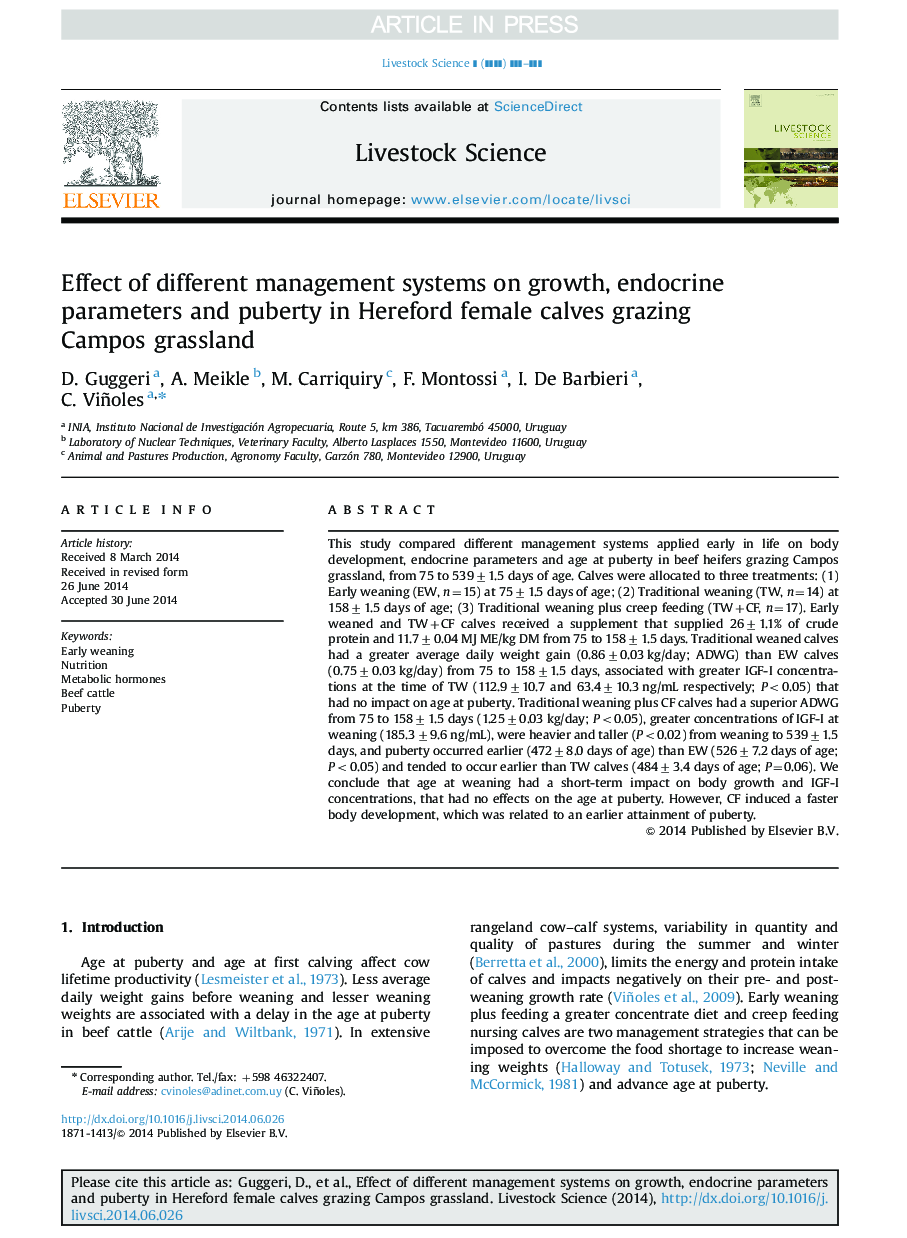| Article ID | Journal | Published Year | Pages | File Type |
|---|---|---|---|---|
| 5790065 | Livestock Science | 2014 | 8 Pages |
Abstract
This study compared different management systems applied early in life on body development, endocrine parameters and age at puberty in beef heifers grazing Campos grassland, from 75 to 539±1.5 days of age. Calves were allocated to three treatments: (1) Early weaning (EW, n=15) at 75±1.5 days of age; (2) Traditional weaning (TW, n=14) at 158±1.5 days of age; (3) Traditional weaning plus creep feeding (TW+CF, n=17). Early weaned and TW+CF calves received a supplement that supplied 26±1.1% of crude protein and 11.7±0.04 MJ ME/kg DM from 75 to 158±1.5 days. Traditional weaned calves had a greater average daily weight gain (0.86±0.03 kg/day; ADWG) than EW calves (0.75±0.03 kg/day) from 75 to 158±1.5 days, associated with greater IGF-I concentrations at the time of TW (112.9±10.7 and 63.4±10.3 ng/mL respectively; P<0.05) that had no impact on age at puberty. Traditional weaning plus CF calves had a superior ADWG from 75 to 158±1.5 days (1.25±0.03 kg/day; P<0.05), greater concentrations of IGF-I at weaning (185.3±9.6 ng/mL), were heavier and taller (P<0.02) from weaning to 539±1.5 days, and puberty occurred earlier (472±8.0 days of age) than EW (526±7.2 days of age; P<0.05) and tended to occur earlier than TW calves (484±3.4 days of age; P=0.06). We conclude that age at weaning had a short-term impact on body growth and IGF-I concentrations, that had no effects on the age at puberty. However, CF induced a faster body development, which was related to an earlier attainment of puberty.
Related Topics
Life Sciences
Agricultural and Biological Sciences
Animal Science and Zoology
Authors
D. Guggeri, A. Meikle, M. Carriquiry, F. Montossi, I. De Barbieri, C. Viñoles,
